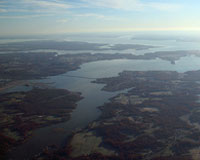Background
Since 1972, the Clean Water Act has protected our health and environment by reducing the pollution in streams, lakes, rivers, wetlands, and other waterways.
Clean Water Act
Water Contamination
Despite tremendous progress, 40 percent of the nation’s waterways assessed by states are still unsafe for fishing and swimming. Pollution from factories and sewage treatment plants, soil erosion, and wetland losses have been dramatically reduced. But runoff from city streets, rural areas, and other sources continues to degrade the environment and puts drinking water at risk. Fish in many waters still contain dangerous levels of mercury, polychlorinated biphenyls (PCBs), and other toxic contaminants.
What’s New
U.S. Code & Regulations
Clean Water Act (US Code Title 33, Chapter 26)
Title 40 — Protection of Environment
Quick Links

